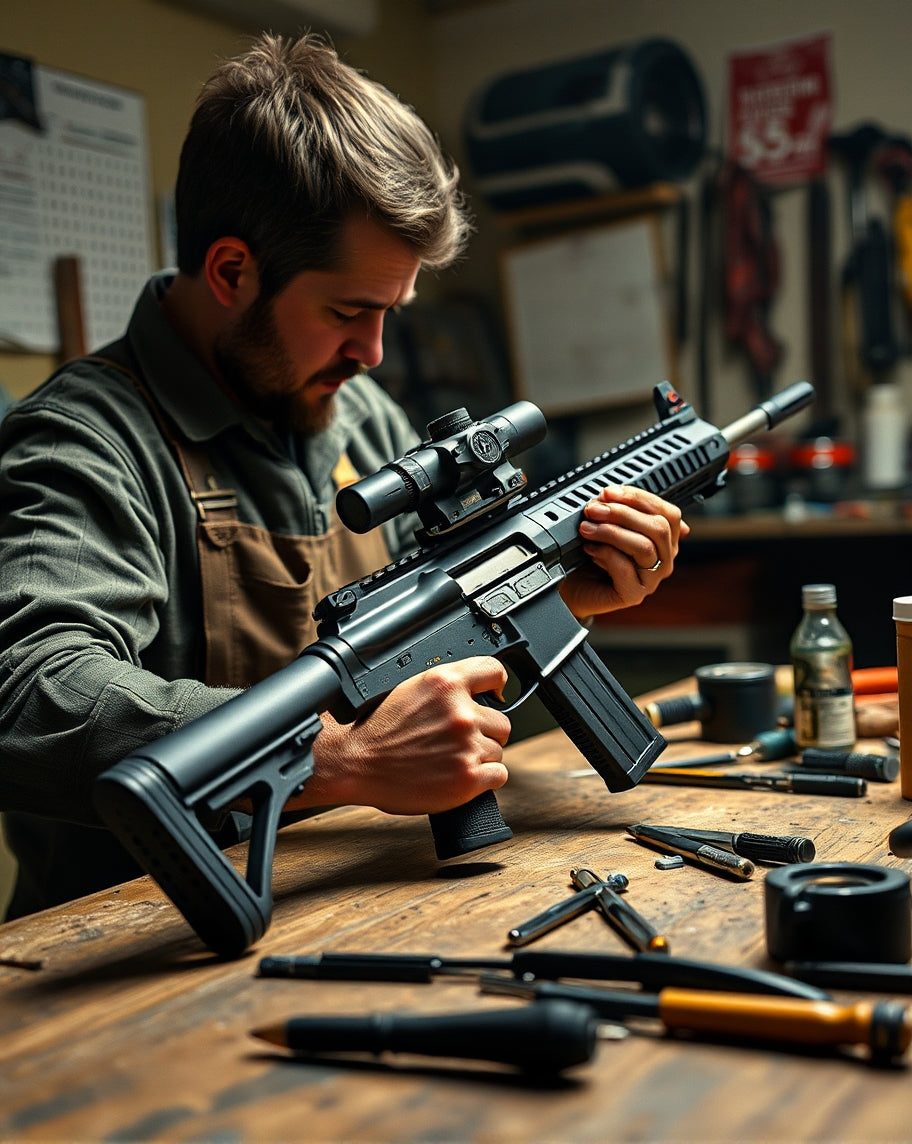Gel Blaster Gun Repair and Troubleshooting

Is your gel blaster gun acting up? Don't worry, it happens to the best of us! In this guide, we'll break down some common gel blaster problems and provide easy-to-follow solutions.
Common Issues and Fixes
Jamming:
- Problem: Gel balls get stuck in the blaster's mechanism, preventing it from firing.
- Solution:
- Clear the jam: Carefully remove the gel balls from the feed tube or chamber. If the jam is deep, you may need to disassemble the blaster.
- Check the spring: Ensure the spring is tensioned correctly and not damaged. A weak or broken spring can cause jamming.
- Adjust the hopper: If your blaster has a hopper, make sure it's not overfilled. Overfilling can lead to gel balls getting stuck and jamming the mechanism.
Inaccurate Shooting:
- Problem: The blaster shoots off target, making it difficult to hit your intended target.
- Solution:
- Adjust the hop-up unit: The hop-up unit is responsible for giving the gel ball a backspin, which increases accuracy and range. Experiment with different hop-up settings to find the optimal setting for your blaster and gel balls.
- Check the barrel: Ensure the barrel is clean and free of obstructions. Any debris or residue can affect the accuracy of your shots.
- Experiment with different gel balls: Different gel ball types and sizes can have varying flight characteristics. Try using different gel balls to see if it improves your accuracy.
Weak Firing Power:
- Problem: The blaster doesn't shoot as strongly as it used to, resulting in shorter range and less impact.
- Solution:
- Inspect the spring: A worn-out or damaged spring can reduce the firing power of your blaster. If the spring is damaged, you may need to replace it.
- Check the battery voltage (if applicable): If your blaster is battery-powered, ensure the battery is fully charged and in good condition. A weak battery can reduce firing power.
- Ensure the piston is moving smoothly: The piston is a crucial component in the firing mechanism. If the piston is stuck or moving with resistance, it can affect the blaster's performance.
Leaking:
- Problem: Gel balls or water leak from the blaster, making it messy and potentially damaging the internal components.
- Solution:
- Check the O-rings: O-rings are small rubber seals that help prevent leaks. Inspect the O-rings for damage or wear. If they are damaged, you'll need to replace them.
- Tighten any loose screws or connections: Loose screws or connections can cause leaks. Tighten them securely to prevent water or gel balls from escaping.
- Use a silicone lubricant: Apply a small amount of silicone lubricant to the O-rings to help them seal properly.

Battery Issues:
- Problem: The battery is not charging or holding a charge, preventing the blaster from functioning.
- Solution:
- Try a different battery or charger: If your battery is not charging, try using a different battery or charger.
- Check the battery contacts for corrosion: Corrosion can prevent the battery from making proper contact with the charger or blaster. Clean the contacts if necessary.
- Follow the manufacturer's instructions for battery care: Different batteries have specific care and maintenance requirements. Follow the manufacturer's instructions to ensure optimal battery performance.
General Maintenance Tips
- Regular Cleaning: Clean your blaster after each use to prevent jams and maintain performance. Remove any gel balls, debris, or residue from the feed tube, chamber, and barrel.
- Storage: Store your blaster in a dry, cool place to avoid damage. Avoid storing it in direct sunlight or extreme temperatures.
- Lubrication: Use silicone lubricant on moving parts to reduce friction and wear. This can help prevent jamming and improve the blaster's performance.
- Avoid Overuse: Excessive firing can lead to premature wear and tear. Give your blaster a break if you're using it intensively.
- Follow Manufacturer's Guidelines: Refer to the user manual for specific maintenance instructions. The manufacturer may have additional tips or recommendations for caring for your particular blaster model.
Remember: If you're unsure about a repair, it's always a good idea to consult with a professional or refer to online tutorials. With proper care and maintenance, your gel blaster gun will provide you with endless hours of fun.






